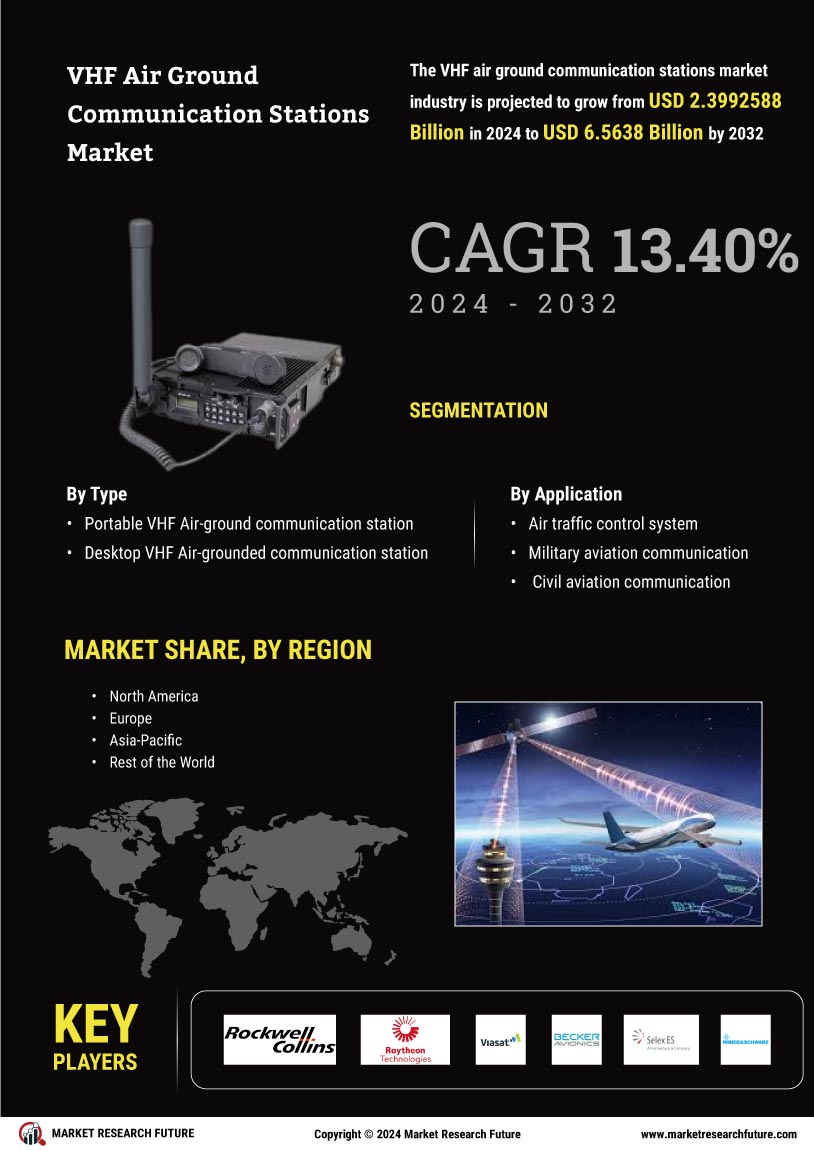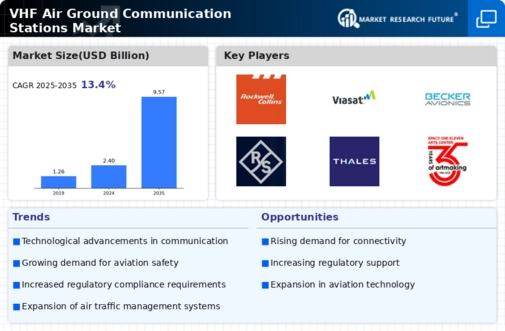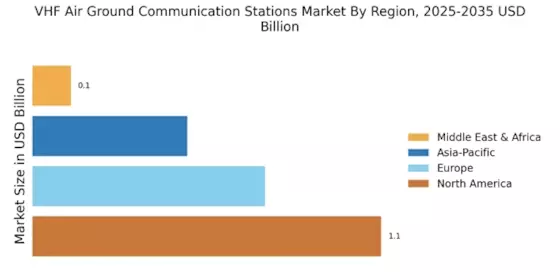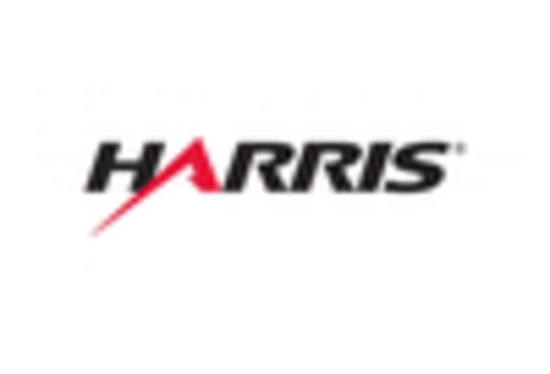Emerging Markets and Aviation Growth
The VHF Air Ground Communication Stations Market is poised for growth due to the emergence of new markets and the expansion of aviation sectors in developing regions. Countries in Asia-Pacific and Africa are experiencing rapid growth in air travel, leading to an increased need for reliable communication systems. As these regions invest in their aviation infrastructure, the demand for VHF air ground communication stations is likely to rise. The International Air Transport Association (IATA) has projected that air passenger numbers will double by 2037, indicating a substantial opportunity for market expansion. This trend suggests that manufacturers and service providers in the VHF Air Ground Communication Stations Market may need to adapt their strategies to cater to the unique requirements of these emerging markets, ensuring they remain competitive in a dynamic landscape.
Regulatory Influences and Compliance Requirements
The VHF Air Ground Communication Stations Market is significantly shaped by regulatory influences and compliance requirements imposed by aviation authorities. These regulations are designed to ensure safety and reliability in air traffic communication. For instance, the Federal Aviation Administration (FAA) and the International Civil Aviation Organization (ICAO) have established stringent guidelines that necessitate the use of VHF communication systems in various aviation operations. Compliance with these regulations is not only mandatory but also drives the demand for modernized communication stations. As a result, manufacturers are compelled to innovate and upgrade their systems to meet these standards, which in turn stimulates market growth. The increasing focus on safety and operational efficiency in aviation is likely to further reinforce the importance of regulatory compliance in the VHF Air Ground Communication Stations Market.
Integration of Advanced Communication Technologies
The VHF Air Ground Communication Stations Market is increasingly influenced by the integration of advanced communication technologies. The advent of technologies such as satellite communication and data link systems is reshaping traditional VHF communication methods. These advancements enable more efficient data transmission and enhance the overall communication experience for pilots and air traffic controllers. The market is likely to benefit from the growing trend of integrating VHF systems with satellite communication, which can provide coverage in remote areas where traditional VHF may be limited. This integration not only improves communication reliability but also supports the increasing complexity of air traffic management. As the aviation industry continues to evolve, the VHF Air Ground Communication Stations Market is expected to adapt to these technological changes, ensuring that communication remains effective and efficient.
Technological Advancements in Communication Systems
The VHF Air Ground Communication Stations Market is experiencing a surge in technological advancements that enhance communication efficiency and reliability. Innovations such as digital signal processing and improved antenna designs are being integrated into VHF systems, allowing for clearer transmissions and reduced interference. The market is projected to grow at a compound annual growth rate of approximately 5.2% over the next five years, driven by these advancements. Furthermore, the introduction of software-defined radios is likely to revolutionize the way air-ground communication is conducted, providing flexibility and adaptability to changing operational needs. As these technologies evolve, they are expected to play a crucial role in improving safety and operational efficiency in aviation, thereby propelling the VHF Air Ground Communication Stations Market forward.
Increased Demand for Air Traffic Management Solutions
The VHF Air Ground Communication Stations Market is witnessing an increased demand for effective air traffic management solutions. As air traffic continues to rise, the need for efficient communication systems becomes paramount. VHF communication stations play a vital role in facilitating real-time communication between pilots and air traffic controllers, ensuring safe and orderly air traffic flow. According to recent data, the number of commercial flights is expected to increase by 4.5% annually, necessitating enhanced communication capabilities. This growing demand for air traffic management solutions is likely to drive investments in VHF communication infrastructure, thereby expanding the market. The integration of advanced technologies, such as automated communication systems, is also anticipated to enhance the operational capabilities of VHF stations, further propelling the VHF Air Ground Communication Stations Market.


















Leave a Comment